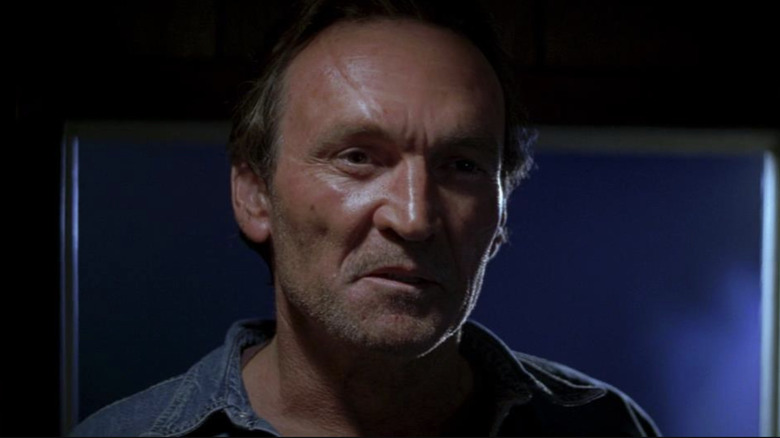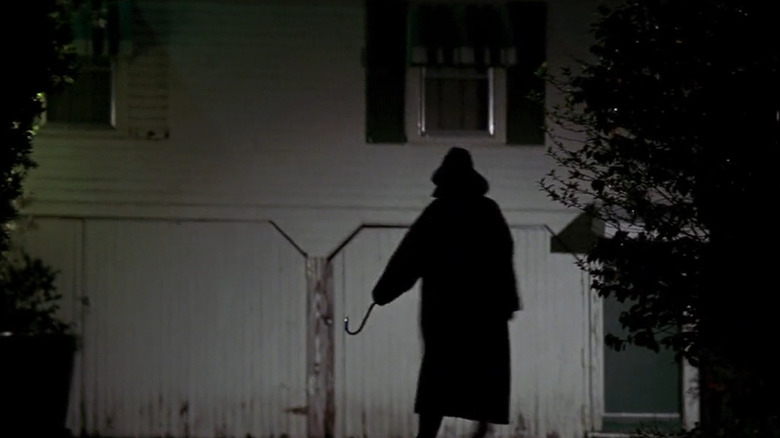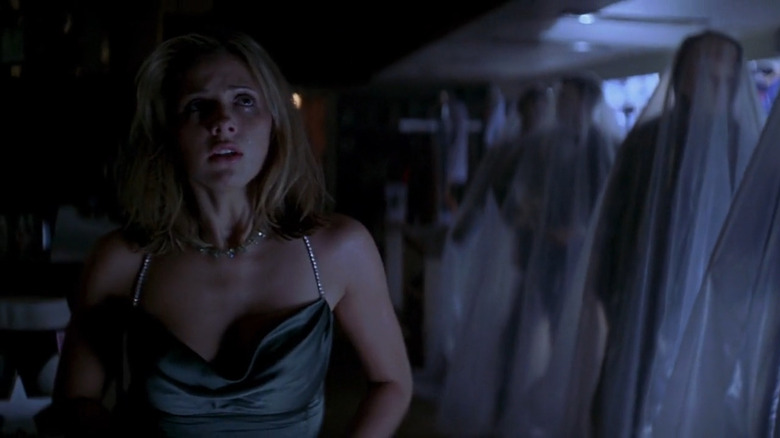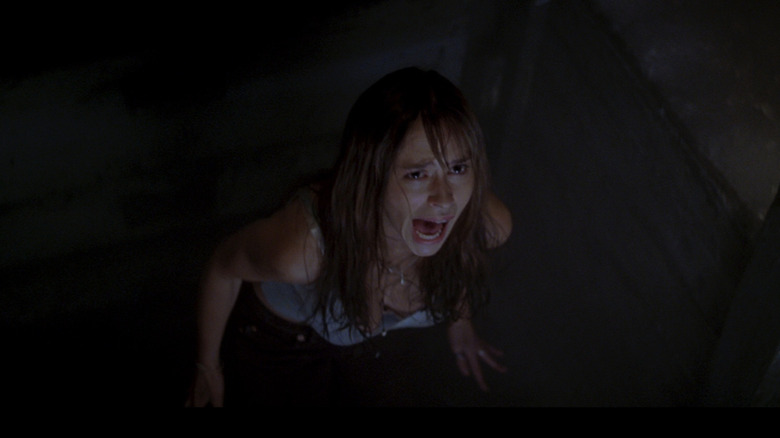I Know What You Did Last Summer Needed A Killer Who Wouldn't Stay In Character
Stop me if you've heard this before. Two teenagers are making out in a car when the radio announces a killer with a hook hand has escaped from a nearby asylum. It causes an argument between the couple as the girl is spooked by the announcement and wants to leave the secluded lover's lane. The hormone-fueled guy, now certain he's not getting any, steps on the gas and peels away from the make-out spot. Later, as the girl exits the car, she sees a long scratch down the side of the car and a bloody hook hanging from the door. While the exact details vary depending on who's telling it, you've probably heard some version of this legendary tale or seen it play out in "I Know What You Did Last Summer."
The 1997 slasher flick embraced the bare bones of "the hooked killer," but the man behind the hook, Muse Watson, gave him a new, less threatening spin. In 2020, the actor told Vulture that he embraced casual violence on-screen and slipped in and out of character to develop friendly relationships with the cast on set.
Killing is like drinking coffee
Watson, who's been in show business for more than three decades, told Vulture that he "loans [his] body to the character" during a film shoot, but he wasn't thrilled about letting the hooked fisherman set up shop in his bones. However, prior to "I Know What You Did Last Summer," Watson hadn't experienced a big break in Tinsel Town, and he knew horror was one way to stand out in Hollywood. So he accepted the role, learned to wield a hook, and perfected the appropriate walk for stalking teenagers. Once Watson had the hooking and swaggering mastered, he could hear the character in his head, and gained a real understanding of what it means to be a ruthless killer:
"One night I was conjuring the character and I got the idea that he was laughing at me. I immediately said, 'What are you laughing at?' And he said, 'You're trying to work yourself up to the point where you can kill somebody. I'm a psychotic. It's like drinking a cup of coffee to me. It ain't nothing.'"
And that's exactly how Watson played the character. He didn't taunt his victims with clever one-liners or waste time with unnecessary torture. The Fisherman shows up, takes people out, and calls it a day. The actor called this approach "the best acting decisions [he's] ever made in [his] life," because he didn't have to go full method and walk around the set like a violent psychopath.
A nice killer
The nonchalant approach worked best for Watson's mental well-being as well as that of his co-stars, 17-year-old Jennifer Love Hewitt and 19-year old Sarah Michelle Gellar. According to Watson, the production wanted an actor who could elicit fear on-screen while "be[ing] nice to the kids" on set. Watson's fright factor in the film is debatable but his bonds with the cast off-screen isn't.
He enjoyed working with all of the young actors, but Watson developed a close bond with Gellar. He revealed that they spoke for hours about everything from acting to their families. The friendship helped Gellar relax on set and focus on the job, which came in handy during one of the movie's successful sequences.
Near the end of the film, Helen (Gellar) tiptoes through a department store, past some mannequins, calling her sister's name. With a sudden look of horror, she notices one of the covered mannequins has a fisherman's hat. The killer suddenly lunges at Helen and provides the viewers with a decent jump scare.
The scene is one of the most intense in the movie, but in an on-set interview, Gellar admitted that she enjoyed filming scary scenes as long as it didn't feel real. "No one likes to be scared in real life," she admitted, "but when you know it's for fun, I think it's a very exciting thing and it's an adrenaline rush."
Watson reassured Vulture that Gellar enjoyed filming the mannequin scene, recalling, "When it was over, when they called cut, Michelle and I would look at each other and start laughing our tails off, because we knew how scary that was gonna be to the audience."
The movie has a scary scene or two, but it never found a way to stretch those moments into a successful franchise.
A failed franchise
"I Know What You Did Last Summer" had a lot going for it. It featured tried and true slasher tropes, hot young stars, a villain powered by an urban legend, and earned $125 million worldwide. These were all signs that a franchise could be successful. In spite of this, the sequel, "I Still Know What You Did Last Summer," was a hopeless flop, grossing only $40 million dollars, and the final film, "I'll Always Know What You Did Last Summer," sealed the franchise's doom.
For one film, the man with a hook was a decent baddie, but audiences quickly grew tired of his silent stalking, predictable killings, and repetitive storyline. Of course, successful horror franchises with all of these elements exist, such as "Halloween" and "Friday the 13th," but those are classics with well-established fanbases, and slapping a new face or hook on the same formula is no longer a guarantee of success.
"I Know What You Did Last Summer" was intended to capitalize on the success of "Scream," but the franchise ultimately suffered from the comparison. Thanks to "Scream," the best killers of the late '90s and 2000s embraced their inner demons, and killed their prey in smart, witty, and increasingly interesting ways. Or, at the very least, they sprinkled a decent movie reference over their intended victims before taking them out. The silent fisherman with an apathetic attitude and a hook never had a chance of competing with them.



